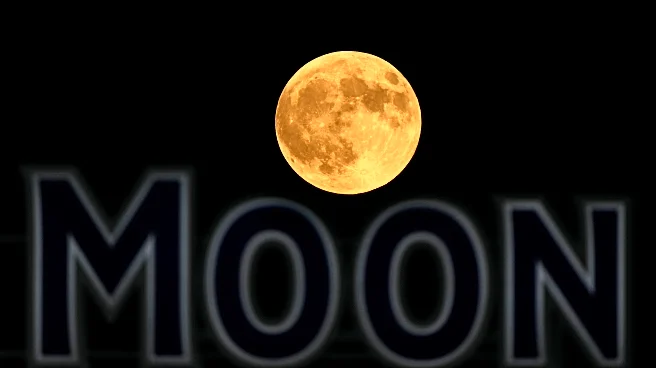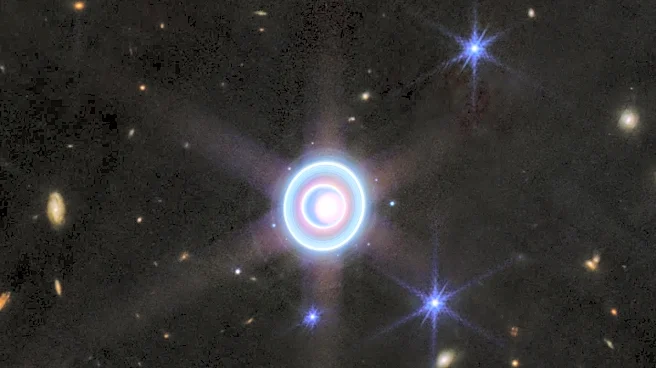What's Happening?
On Monday night, the first supermoon of the year will be visible, appearing larger and brighter than a typical full moon. This astronomical event occurs when the moon is at its closest point to Earth in its orbit, making it appear up to 14% larger and 30% brighter than the faintest full moon of the year, as reported by NASA. This October supermoon is the first of three expected in 2025, with additional supermoons anticipated in November and December. The event is accessible to viewers worldwide without the need for telescopes or other equipment, provided the weather conditions are favorable. Derrick Pitts, chief astronomer at the Franklin Institute, explains that while the difference in appearance is subtle, it is a noteworthy event for those interested in astronomy.
Why It's Important?
Supermoons offer a unique opportunity for public engagement with astronomy, encouraging people to look up and appreciate the night sky. These events can inspire interest in space science and provide educational opportunities for schools and communities. For scientists, supermoons allow for enhanced observation of the moon's surface and its effects on Earth, such as tidal changes. The increased brightness and size can also aid in the study of lunar features, making it an ideal time for both amateur and professional astronomers to conduct observations and capture images.
What's Next?
Following the October supermoon, the closest supermoon of the year is expected in November, with another in December. In 2026, two significant lunar eclipses are anticipated: a total eclipse visible across North America, Asia, and Australia in March, and a partial eclipse in August across the Americas, Africa, and Europe. These events will continue to provide opportunities for public engagement and scientific study.











